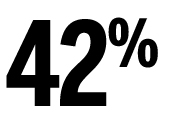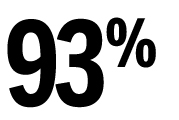Human trafficking isn’t what you think it is

From Public Safety Canada
Human trafficking doesn't have to involve crossing borders. And it's not just a foreign problem, it's happening right now in communities across Canada.
Human trafficking involves recruiting, moving, or holding victims to exploit them for profit, usually for sexual reasons or forced labour. Traffickers can control and pressure victims by force or through threats, including mental and emotional abuse and manipulation.
On social media
Need help?
If you or someone you know is a victim or survivor of sex or labour trafficking, get help now.
Can you recognize different forms of human trafficking?
Sex trafficking

Learn more about sex trafficking.
Labour trafficking

Learn more about labour trafficking.
Human trafficking: It's not what it seems
Transcript
Music Starts: ♪♪
TEXT ON SCREEN: Human trafficking isn't what you think it is.
A man and a young woman standing in a room. The man opens the curtains.
Quick shots of the man and young woman going on dates and partying.
The man and young woman walk down the street in each other's arms.
The man caresses the young woman's face.
A text message reads: She's beautiful
Quick shots of the man and young woman looking at each other, kissing and cuddling.
The man drapes a necklace on the young woman as she looks in the mirror.
Quick shots of the man and young woman kissing and laughing together.
The young woman sits in the dark as the man consoles her.
The man finishes clasping a necklace on the young woman. He squeezes her shoulders.
The young woman stares back at the man uncomfortably.
The man and young woman argue. He yells at her on the street and in a car.
The couple sit on a bed as he strokes her arm.
A text message reads: You'll love her
The young woman strokes her necklace.
The man stands up from the kitchen table, slamming a plate as he yells at her. He pushes her against a wall.
The young woman looks at him affectionately.
Quick shots of them fighting in a car and in the kitchen.
Quick shots of the young woman consoling the man in the bedroom, the kitchen and a car.
The man rubs the young woman's shoulder. She looks uncomfortable and looks at her reflection.
Quick shots of the young woman sitting alone and scared in different rooms.
The man talks on his phone while the woman cries.
The man types a text message that reads: She's all yours.
The couple lie in bed. He kisses her cheek while holding her neck as she stares frightened at the ceiling.
A text message reads: Bring cash $$$.
The front door creaks open.
The man and woman turn their faces towards the door.
An unidentifiable man steps through a darkened doorway.
TEXT ON SCREEN: Almost 1/3 of victims in Canada were trafficked by a current or former intimate partner.
TEXT ON SCREEN: Get the facts. Know the signs. Report it. Canada.ca/human-trafficking
A message from the government of Canada.
Canada wordmark.
Better understand human trafficking
How traffickers control victims

Learn what motivates traffickers, how they recruit and maintain control of victims, and how to identify potential warning signs.
Who human trafficking affects

While anybody can be a victim, learn why some people are at higher risk.
The big picture
Because incidents often go unreported, global and Canadian organizations often don’t know the true scope of human trafficking. According to police-reported incidents:

42% of victims were aged 18 to 24 years and nearly one-quarter (23%) were children and youth younger than 18 yearsFootnote1
Spotting human trafficking close to home
Are you seeing warning signs?

How to respond if you think someone you know is being trafficked.
Are you being trafficked?

What to do if you think you’re being targeted or exploited.
Educational tools
Get resources

Download resources to learn more about human trafficking.
Page details
- Date modified:

